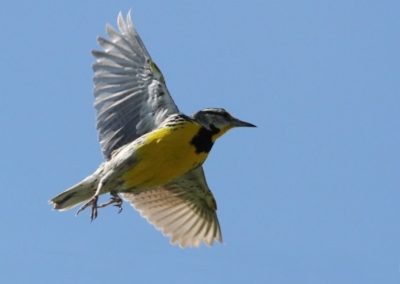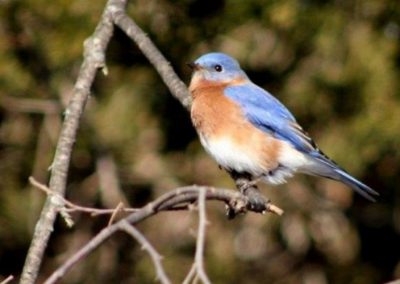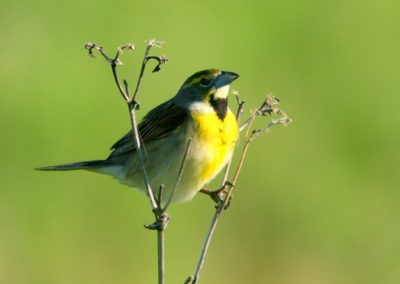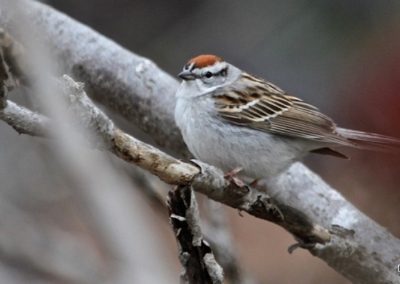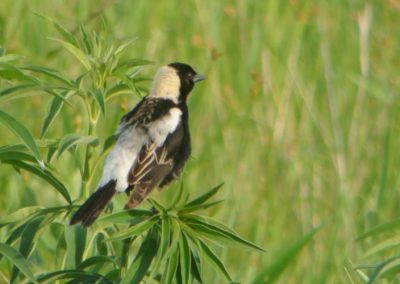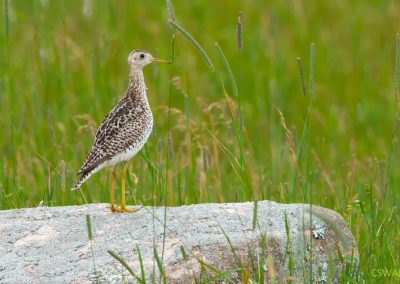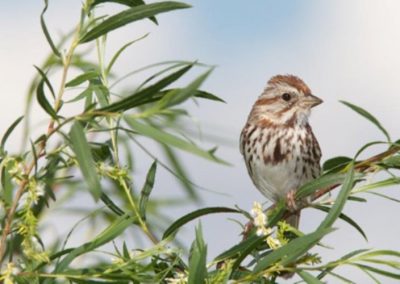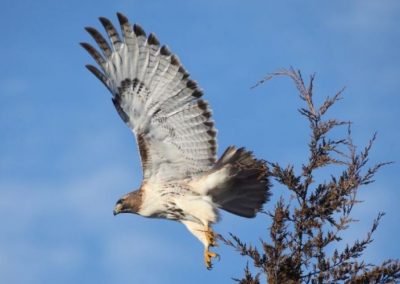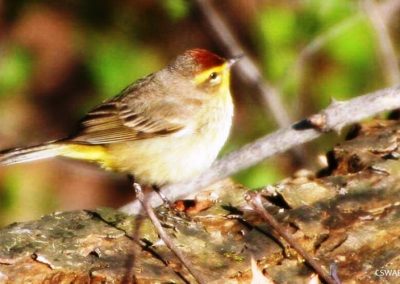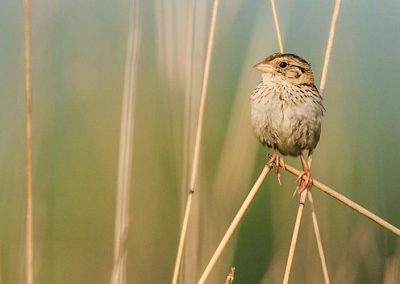
Grassland Birds
Badger is an ecological treasure box that holds our prairie heritage
The Badger Army Ammunition Plant property contains a mix of grasslands with small remnants of native prairie, scattered oak woodlands, and farm fields. It currently hosts some of the largest populations of grassland birds in southern Wisconsin – 103 bird species have been recorded here, of which 21 have critical status in our state. With the Baraboo Hills adjacent to the north, the Badger lands provide a rare continuum of grassland to oak forest.
Many of the species identified at the Badger plant are found in places with such unlikely names as the Rocket Area, the Magazine Area, the Acid Area, the Propellant Burning Grounds, the Nitroglycerine Pond and the Cannon Range. Most of these plant and animal species occupied the prairie long before the Badger plant was built in 1942.
Scientists have found a rich variety of grassland birds at the now-silent Badger Army Ammunition Plant, singing in tall bending grasses, and nestled in pastures dotted with grazing cattle. This habitat may play a critical role in wildlife conservation and efforts to protect the Nation’s migratory birds.
Two-thirds of American grassland bird species are declining in numbers. These are the birds found at Badger. In 2003, biologists with the Wisconsin Department of Natural Resources (WDNR) found that Badger provides habitat for 97 confirmed or probable breeding bird species, of which 21 are grassland and shrubland dependent.
Prairies and Oak Woodlands were historically common in Wisconsin but are now rare throughout the state. Restoration of these globally rare natural communities is critical to the survival of many rare plants and animals that depend on them.
Prairie once occupied approximately 2.1 million acres in Wisconsin. Now, approximately 2,000 acres remain – less than 0.1%. Of these, only those prairies that occurred at the wet and dry ends of the soil spectrum survived. Virtually all deep-soil Mesic Prairies were converted to agricultural or residential uses. The surviving remnants are highly degraded due to fire suppression, over-grazing, invasion of woody species, non-native invasive species and, in the case of Wet Prairies, ditching and tiling.
One factor in the apparent success of bird species at Badger is the remarkable size of this property. The 7,354-acre property provides a variety of habitats which in turn have attracted a wide range of species.
Clearly, the Badger lands are critically important in maintaining, and possibly recovering, some of the biological richness of Sauk County’s disappearing native grasslands. Badger plays a crucial role in protecting Sauk County’s natural heritage. That role can change, for better or worse, as Badger’s future is decided.

